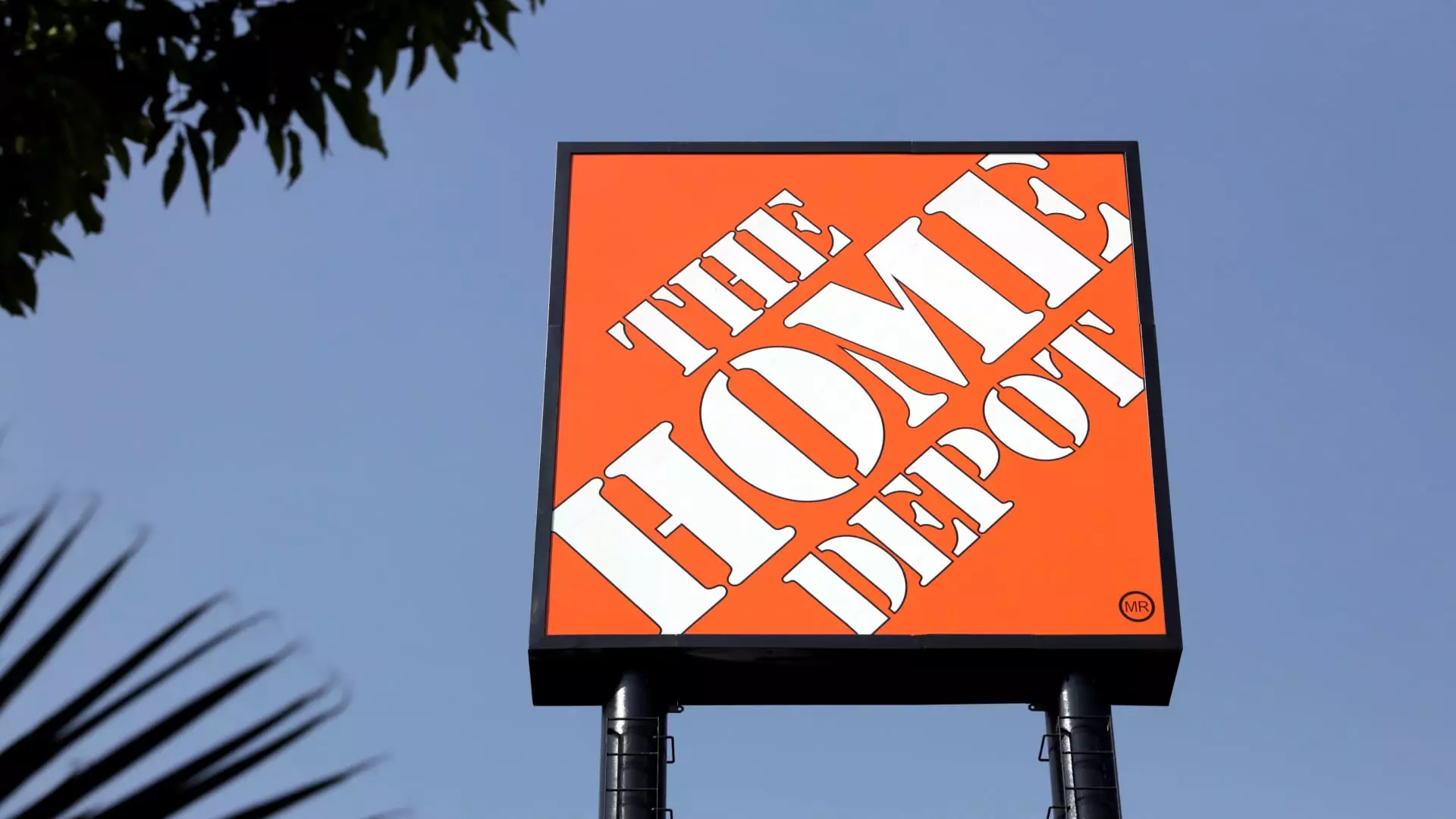Home Depot recently reported a remarkable uptick in quarterly sales, boasting more than 6% year-over-year growth. This increase is partly attributed to a strategic acquisition—SRS Distribution, which specializes in supply provision for roofing, landscaping, and pools. Additionally, the aftermath of natural disasters, notably hurricanes, combined with favorable weather conditions, has increased demand for home improvement products. As a response to these encouraging developments, the retailer has adjusted its full-year sales outlook upwards, now expecting an increase of approximately 4%.
Understanding the context is essential. Prior to this adjustment, analysts had forecasted a more modest growth of between 2.5% and 3.5%. This revised forecast does factor in the contributions from a 53rd fiscal week and the integration of SRS, which is projected to generate around $6.4 billion for the company. However, comparative sales metrics reveal a more sobering outcome—Home Depot anticipates a decline of about 2.5% in comparable sales over the 52-week period. This signals persistent caution among consumers in an economy still grappling with high interest rates and inflation.
In conversation with CNBC, Richard McPhail, Home Depot’s Chief Financial Officer, provided insight into evolving consumer behavior. Despite the solid financial footing of many homeowners—an estimated 90% of the company’s DIY customers own their homes—many individuals are deferring significant home improvement projects. This hesitance is largely attributed to the prevailing economic environment characterized by uncertain borrowing costs and mortgage rates. Consumers are in a state of flux; life changes such as family growth and job relocations foster a demand for remodels, yet many are postponing these projects until financial conditions improve.
The sustained decline in comparable sales—evidenced by an approximate 1.3% drop this quarter—suggests that consumer confidence remains fragile. This marks the eighth consecutive quarter of negative comparable sales for the retailer, creating clouded prospects for immediate growth, despite an overall revenue increase to $40.22 billion.
Home Depot’s financial reporting reveals a complex landscape shaped by broader economic challenges. The company witnessed a decrease in net income, falling from $3.81 billion to $3.65 billion year-over-year. Moreover, inflation and high interest rates impact consumer readiness to engage in discretionary purchasing and home improvement endeavors. The backdrop of the housing market is particularly telling; lower housing turnover reduces the urgency for home renovations and improvements.
Amidst this turbulence, Home Depot has nonetheless demonstrated resilience in its stock performance, with shares increasing approximately 18% year-to-date. This trend slightly lags behind the broader S&P 500’s approximately 26% rise, yet it reflects investor confidence in the retailer’s strategic responses to market challenges.
The acquisition of SRS Distribution represents an ambitious expansion move for Home Depot, aiming to tap into the professional supply market more effectively. By positioning itself as a significant player in the contractor and professional service domains, Home Depot is strengthening its growth potential in the face of consumer spending hesitance. In supporting this initiative, the company plans to open approximately 12 new stores by early February, further expanding its physical presence.
Interestingly, weather conditions also played a role in recent sales trends, with warmer temperatures encouraging purchases of seasonal items. Despite challenges, the upcoming holiday season, characterized by heightened consumer spending, can offer a much-needed boost for the company.
Looking ahead, Home Depot is monitoring external market dynamics, including the potential for tariff implementations on imported goods, particularly from China. This could lead to increased costs, an outcome that industry peers have already begun to address by reassessing their sourcing strategies. While McPhail refrained from enumerating the exact percentage of goods sourced from China, he acknowledged the necessity for diversification, with North America and Mexico being reliable sources.
The evolving retail landscape, underscored by the interplay of high housing prices, aging home structures, and consumer financial behavior, will dictate Home Depot’s next steps. Innovations in product lines—especially seasonal and oversized decorations—demonstrate the company’s commitment to capture consumer interest and drive sales. As Home Depot navigates these challenges and opportunities, a pivotal question remains: what strategies will unlock repressed demand and encourage a shift in consumer spending behavior? The answers to this query will shape the retailer’s resilience in a continuously changing market.


Leave a Reply